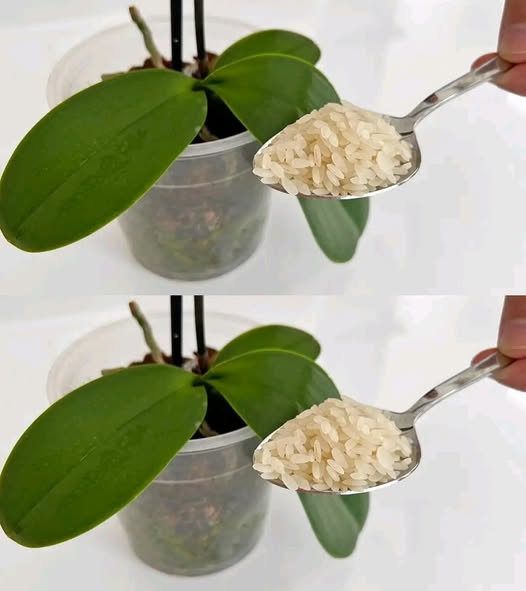ADVERTISEMENT
If the spike is still green and healthy, you can leave it as it is. Some orchids may rebloom from the same spike, while others may grow a new one. Patience is key!
3. Repot Your Orchid (If Needed)
Orchids can sometimes outgrow their pots or the potting medium may break down over time. If your orchid has been in the same pot for a while and the roots are crowded or starting to look unhealthy, it may be time to repot it. Orchids need well-draining soil, typically a mix of bark, sphagnum moss, or perlite, to thrive.
Carefully remove the orchid from its pot and inspect the roots. Trim away any dead or rotting roots, and repot the orchid in a slightly larger pot with fresh orchid mix. Make sure the roots have enough room to breathe, as orchids are epiphytes, meaning they grow best in air-rich environments. Repotting will help your orchid feel rejuvenated and encourage new growth.
4. Water Correctly
Proper watering is essential for orchid health, and many people make the mistake of overwatering or underwatering their plants. Orchids like to be watered thoroughly but don’t want to sit in water. A good rule of thumb is to water your orchid once a week or when the potting medium feels dry to the touch.
When watering, use room-temperature water, and ensure that the water drains freely from the pot. Avoid letting the orchid sit in a saucer of water, as this can cause root rot. You can also mist the leaves occasionally, but be careful not to soak the plant. Orchids thrive in humid environments, so maintaining moderate humidity around the plant is important, especially in dry climates.
5. Provide the Right Light
Orchids need bright, indirect light to thrive. If your orchid is placed in a spot where it gets too much direct sunlight, the leaves may burn, causing the plant stress. On the other hand, if the orchid is in a too-dark area, it may not have enough energy to bloom again.
Place your orchid near a window where it can get plenty of light, but avoid harsh, direct sunlight. A north- or east-facing window is ideal, or you can use sheer curtains to diffuse the light if your windows face south or west.
6. Adjust Temperature and Humidity
Orchids prefer warm temperatures, ideally between 65°F to 75°F (18°C to 24°C) during the day, with a slight drop at night. They also thrive in higher humidity (around 40-60%). If your home is dry, especially in the winter, you can use a humidity tray (a shallow tray filled with water and pebbles) under the orchid pot, or you can use a room humidifier to create a more favorable environment.
Orchids also need a bit of a “rest” period to bloom again. After the flowers fade, your orchid may enter a dormancy period, during which it needs less water and cooler temperatures. This can help stimulate the next blooming cycle. Just make sure not to let the plant dry out completely during this time.
7. Fertilize with Care
Fertilizing is an important step in reviving your orchid, as it provides the nutrients needed for healthy growth and blooming. Use a balanced, water-soluble orchid fertilizer, and dilute it to half the recommended strength. Fertilize your orchid once a month during the growing season (spring and summer), and reduce feeding during the dormancy period (fall and winter).
Be sure not to over-fertilize, as this can harm the plant and cause root burn. Orchids don’t require heavy feeding, so a little goes a long way!
8. Be Patient and Watch for New Growth
After trimming the flower spike, repotting, and adjusting care routines, be patient! Orchids can take time to bounce back, and it may take several months before you see new buds or blooms. During this period, continue providing consistent care and ensure that the plant is in the best possible environment.
Watch for new growth, such as fresh leaves, roots, or even a new flower spike. When a new spike appears, it’s a sign that your orchid is ready to bloom again.
Conclusion
Reviving a dried orchid whose flowers have faded is entirely possible with the right care and attention. By trimming the flower spike, providing proper watering, light, and humidity, and giving your orchid time to rest and recover, you can bring your orchid back to life and enjoy its stunning blooms again. Orchids are a rewarding plant to grow, and with a little patience, you’ll be rewarded with beautiful flowers year after year. So, don’t give up on your orchid—revive it, care for it, and watch it bloom once more!
ADVERTISEMENT
